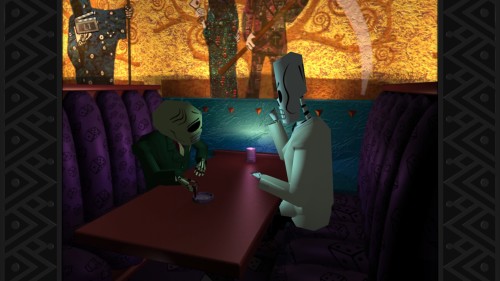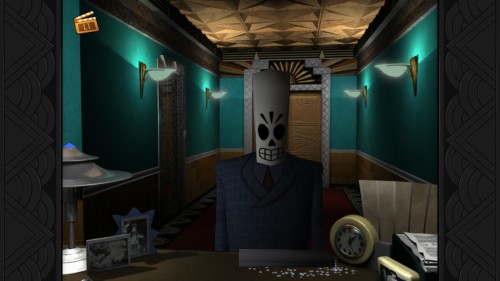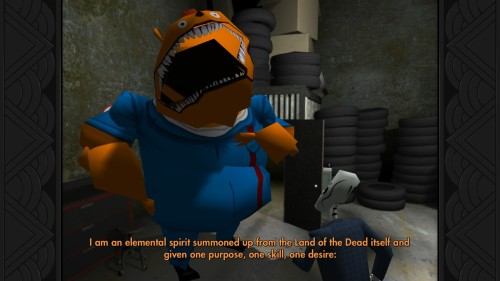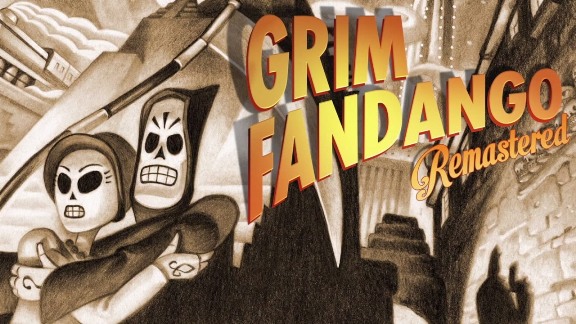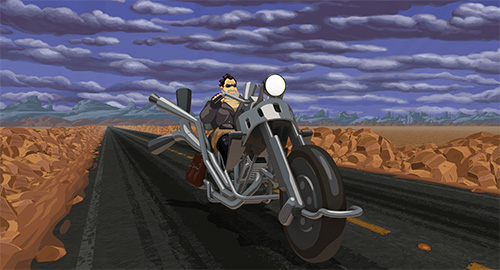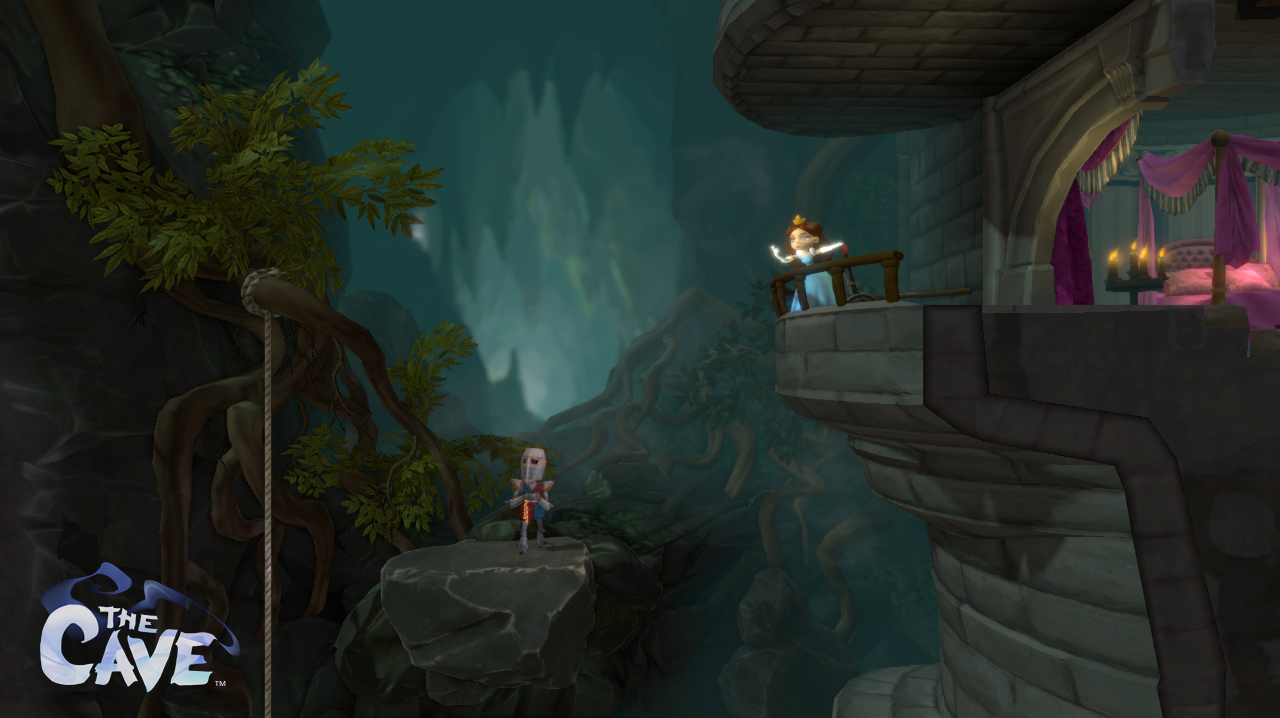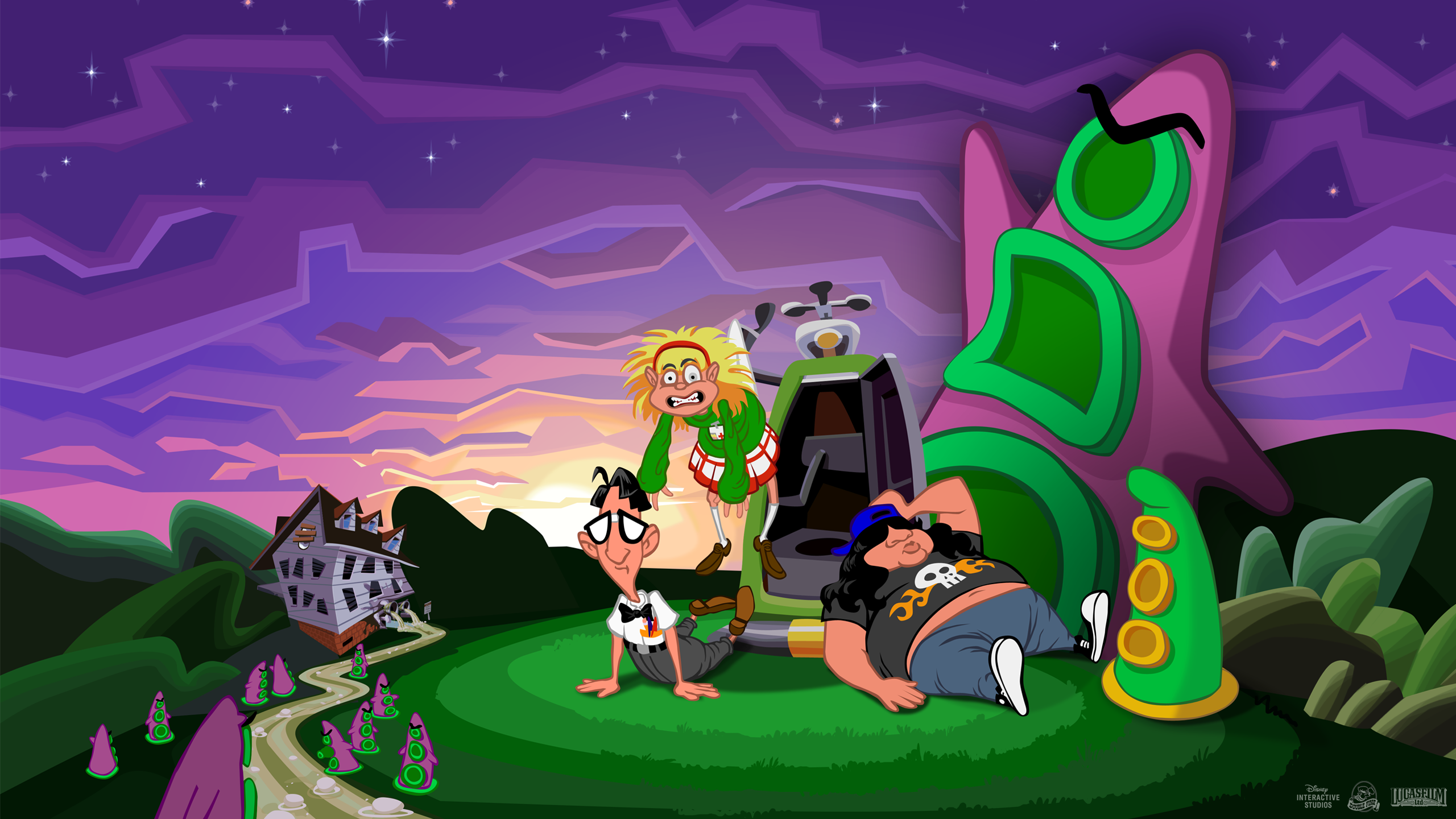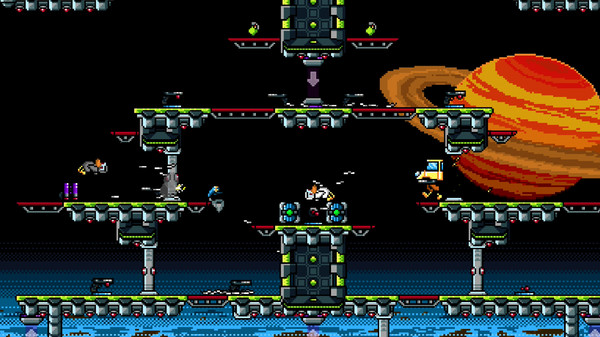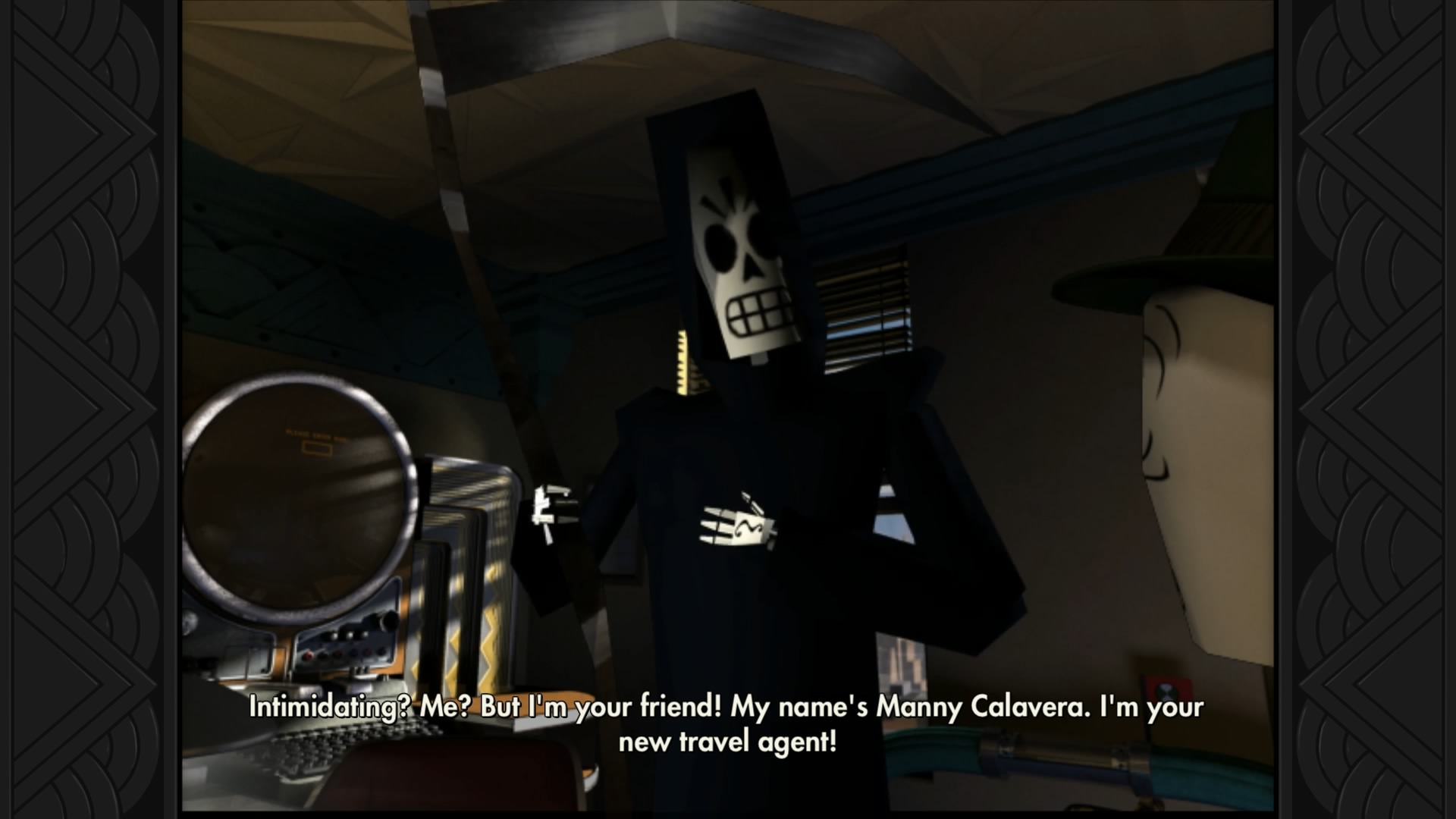
As Tim Schafer himself notes in the game’s commentary, Grim Fandango is something that could only have been made at one specific moment in gaming history. With an exceptional team of creatives working together at the tail end of LucasArts’ golden age of adventure games in the late 90’s, it’s fondly remembered as one of the greatest examples of the genre. It’s also been one that’s been difficult to get a hold of, and to get running on modern systems, for new generations of gamers. Ah, but this is where Double Fine has done the populace a massive solid and swooped in! Grim Fandango Remastered brings the classic back to PC, PS4 and Vita for old fans to enjoy once again, although whether it can attract a new audience remains to be seen.
Many will be disappointed to know that Grim Fandango Remastered is a ‘remaster’ in the most technical sense of the word. This isn’t a ground-up re-make like Resident Evil, nor does it transform the predominantly pre-rendered environments into fully-3D worlds for the next generation. It is more or less the exact same game as released in 1998, with a few upgrades. While models and meshes remain the same, textures on characters have been cleaned up and up-rezzed for HD. A new lighting engine adds appropriate dynamic lighting to models, to enhance the mood and better integrate them into the backgrounds. Cutscenes have been upscaled relatively cleanly, and the Melbourne Symphony Orchestra makes an appearance to perform new recordings of a couple of tracks in the score.
However, the game still predominantly uses the same assets from 17 years ago, meaning it still plays in 4:3 (unless you feel like stretching it out to 16:9 and ruining the look) and the dialogue still sounds low-fi compared to the higher quality recordings of today. For fans of the original, this may all be great news, as the game remains unmolested by modern fingers, changing what didn’t need to be changed, which is more than can be said for some other Lucas properties. For newer gamers, it’s best to look at the game as a product of the time.
By far the best new feature of the Remastered edition is the commentary, recorded by several of the original team including Schafer, which appear as icons on certain screens in the game, or when highlighting certain objects. It can be easy to miss the cues to trigger the audio files, but they contain a wealth of interesting and funny anecdotes, from Schafer’s negotiations for more time, to the various cuts made to the game and even some really interesting stuff about what happens to the game’s boney citizens when they get ‘sprouted’ (although Schafer does admit he didn’t really ‘think it through’). There’s also a very cool focus on the technical aspect of the game, which often goes unnoticed, as the developers discuss the tech and effort that went into achieving the game on the systems of 1998.
As we all know, Grim Fandango is the noir-inspired story of Manny Calavera, a grim reaper in the Land of the Dead (inspired by the Mexican Day of the Dead and not the average Romero movie). Working to pay off an unknown spiritual debt, he’s really more of a travel agent by way of Humphrey Bogart than a specter of death, as he works with recently departed souls to send them to the Ninth Underworld. If you lived a sin-free life of charity, you may qualify for a short trip on the Number 9 train, but those of lesser moral fibre could find themselves making the entire four-year trip on foot. Just like all good film noir, the pursuit of a woman pulls Manny into an evil conspiracy, and he’s thrown into the Land of the Dead to make his own four-year journey to set things right.
The setting and design of the game was always its greatest strength, and remains unique to this day. The Land of the Dead is such a bizarre and beautiful place to behold, and the intricacies of its inhabitants and the world around them are fascinating to uncover. While the game’s first half, spanning the cities of El Marrow and Rubacava are just as memorable as ever, upon revisiting the game it has to be said the third and fourth years feel simpler and less interesting in comparison, despite a couple of amazing locations (the Greenhouse and the End of the Line spring to mind).
While still an adventure game in the classic sense, as Manny rifles through environments for items to use on other items, engaging in dialogue with kooky and colourful characters, Grim Fandango was the first LucasArts game to stray away from the point-and-click interface. Manny can run around in three dimensions with the joystick, picking up items not by pixel hunting, but by turning his head towards objects of interest. Instead of an inventory screen, the camera zooms into Manny’s coat, as he pulls out items one by one. What was fresh at the time does feel clunky today, especially when using the classic ‘tank’ controls, and does contribute to the game feeling its age.
The game’s puzzle design still largely holds up, constantly thrusting you forward into the web of intrigue the plot creates, and throwing some cool challenges at you. The longest act in Rubacava, as you pursue clues about Manny’s world, is by far the most interesting, especially concerning the shady characters he deals with and puzzles involving everything from beatniks to unions. Some of the more obscure solutions will still stump today, which include dashing dreams in pursuit of a metal detector you can’t possibly know you’ll need yet, and defusing a bomb with vomit. Even the best adventure games of the 90’s had utterly illogical answers to puzzles and as mentioned, Grim Fandango is a still a product of the time.
Unfortunately, during my playthroughs of the game on PC and PS4, I did encounter several bugs that were not in the original – some of which seem to have been remedied by recent patches. At times character models will glitch out during dialogue or dramatic scenes, Manny may find himself locked into a run cycle during a conversation, or props and models may float and cast shadows in the wrong places. While these are understandable in getting such an old game with weird tech to run on modern systems, they are nonetheless disappointing.
Grim Fandango Remastered is still the same amazing game it was from 1998, and despite a few bugs is still every bit as memorable as it was at the time. The strength of the game’s creative aspects, from the story and characters, to the animation and visual design, voice acting, and even the way pre-rendered and 3D elements mesh together still make it an immensely enjoyable experience. That said, it’s arguable how much this remaster really adds outside the outstanding commentary, and looking back without rose-tinted glasses reveals a few rough spots in the original design. Fans will already know whether they need this update, but the uninitiated would be doing themselves a disservice if you didn’t make their own trip through the Land of the Dead with your friendly dead travel agent, Manny Calavera.
One of the most creative stories and worlds ever put to a game | Great commentary feature
Some obscure puzzles | Second half isn't as memorable as the first | Some bugs

